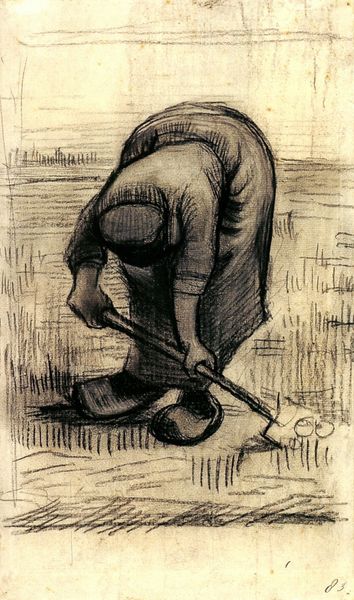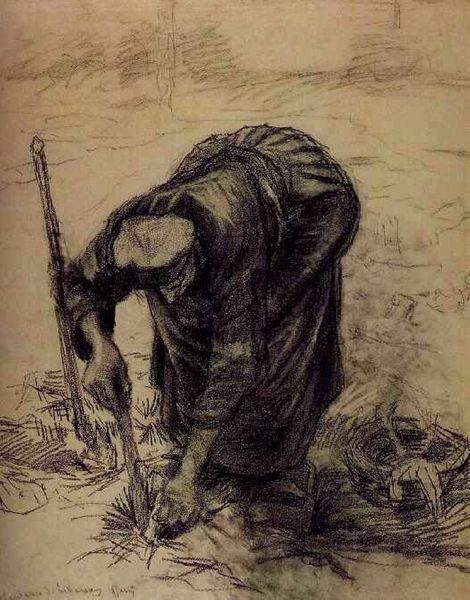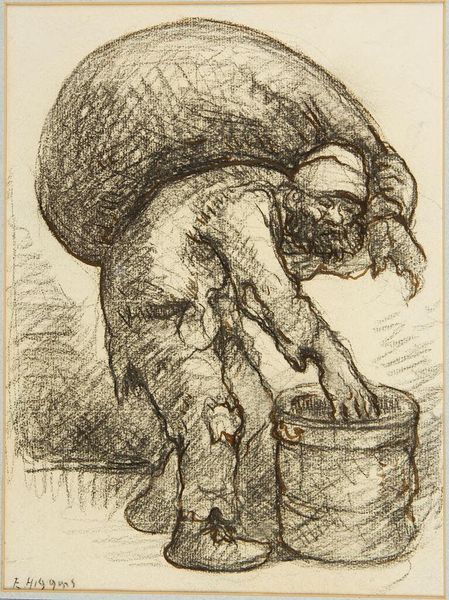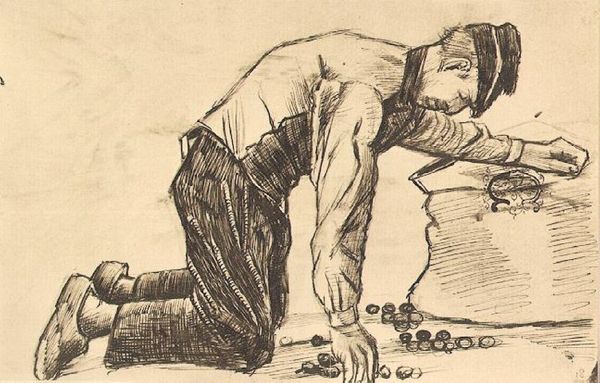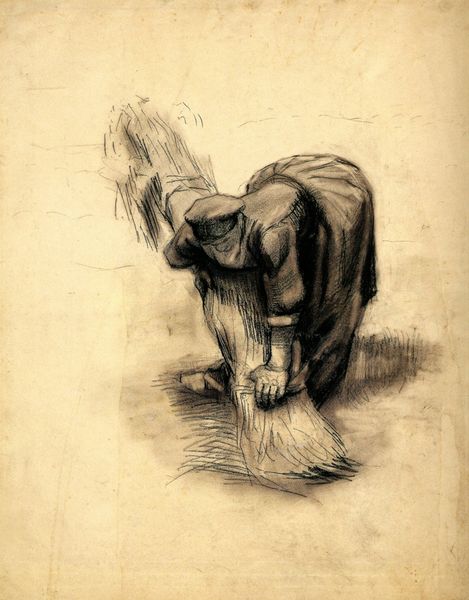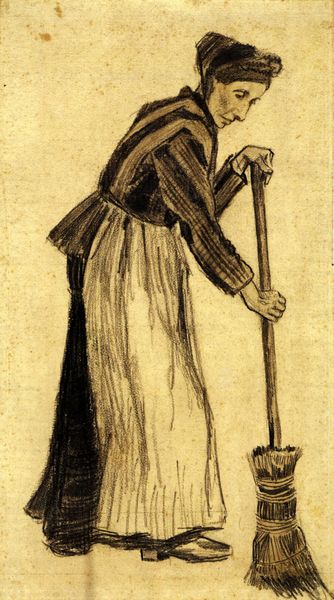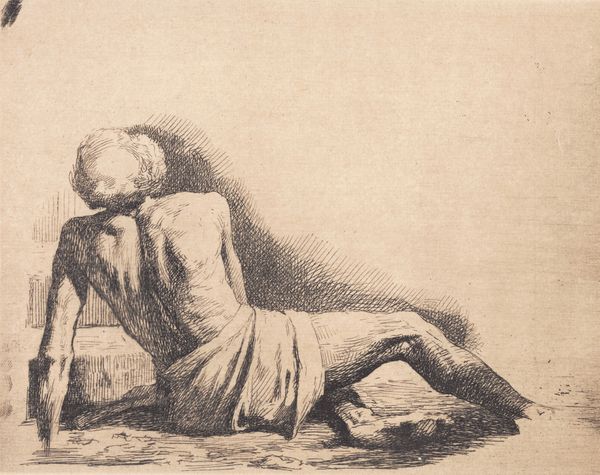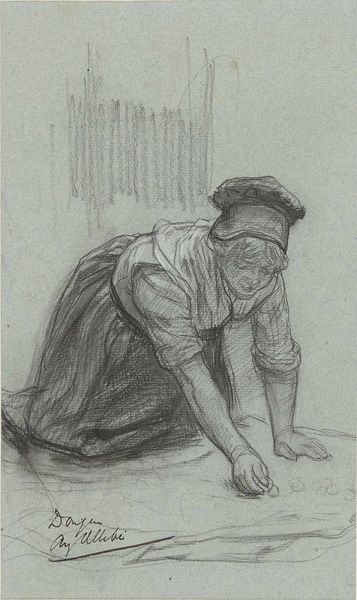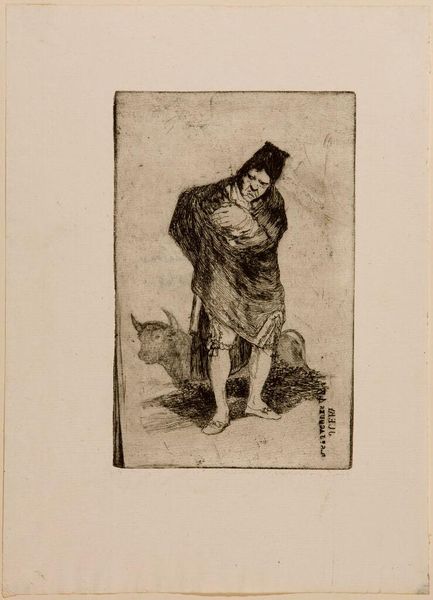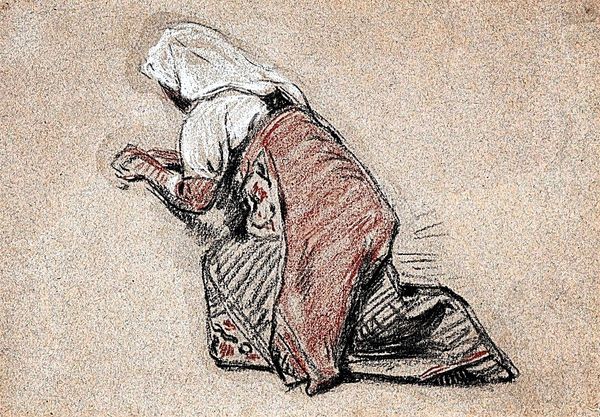
drawing, paper, charcoal
#
drawing
#
impressionism
#
charcoal drawing
#
paper
#
genre-painting
#
charcoal
#
history-painting
#
realism
Copyright: Public domain
Curator: Vincent van Gogh created this charcoal drawing, “Peasant Woman Bending Over,” in 1885. It's currently held at the Kröller-Müller Museum in the Netherlands. Editor: My first impression is one of weary labor. The bent posture and earth-toned palette really convey a sense of physical toil and perseverance, a connection with the soil itself. Curator: Absolutely. Van Gogh’s artistic focus at this stage was profoundly shaped by his empathy for the working class. He sought to depict their reality with an unvarnished truth. This work, especially given the era, aligns with the Realism movement’s agenda to present accurate representations of everyday life and its harshness, diverging from romanticized depictions. Editor: You can certainly feel the weight of that historical context. But also, notice how her form nearly blends with the ground, mirroring a life intimately tied to the land. Her clothing, heavy and draped, almost merges with the earth she’s working on, reinforcing this visual link. What could the clogs possibly signify here? Curator: Ah, that's intriguing. In this period, wooden clogs were common footwear for peasants due to their affordability and durability. Their presence is less symbolic and more practical: clogs were essential tools. However, Van Gogh uses this simple object to dignify and honor that hardscrabble life. They are as necessary to her labor as her hands. Editor: A compelling reading! And the downward curve of her spine, the implied weight in her shoulders – these resonate with a universality beyond the historical. It speaks to the timeless human condition, our relationship to the work that sustains us. Curator: Indeed. This work predates his more expressive, colorful paintings, but it lays the foundation for his artistic compassion. The starkness of the charcoal captures the very essence of labor and social reality. Editor: It's been enlightening to delve into this lesser-known piece. The visual motifs speak clearly about societal context. Curator: Agreed. Analyzing its visual rhetoric helps us see how it served as a powerful form of social commentary.
Comments
No comments
Be the first to comment and join the conversation on the ultimate creative platform.

